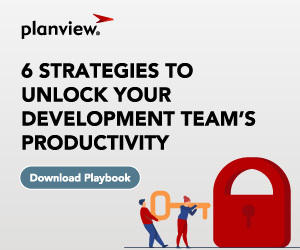
In the dynamic world of technology, where the pace of change is relentless and the demand for agility is non-negotiable, how do enterprises ensure they’re on the path to success? The secret lies in transitioning from a project-oriented management approach to a product-centric model. It’s a paradigm shift that promises reduced time-to-market, heightened agility, and an unwavering focus on delivering value. Yet, the journey is rife with challenges.
Despite beginning with unwavering enthusiasm, McKinsey reports that initiatives often lose approximately 42 percent of their projected value as they progress into later implementation stages and long-term sustainability. The magnitude of inefficiency and waste generated as organizations undergo the transition needs urgent attention from business and technology leaders.
From Project to Product: A Step-By-Step Guide for Organizational Transformation offers a detailed step-by-step roadmap to make the journey easier for enterprises seeking this transformation. Focused on aiding organizations to navigate the hurdles and maximize the opportunities presented by this shift, this guide is an essential resource for business and technology leaders participating in software delivery. Below is a sneak peek of what’s inside, but for a deeper dive, read the complete guide.
A 7-Step Guide for Project to Product Transformation
Think of approaching the project to product shift as preparing to scale a mountain. To succeed, you’ll need a well-defined path, the right tools, and expert guidance. This guide adopts a similar strategy, breaking down the transformation into seven structured steps, each offering valuable benefits to your organization.
- Align Your Organization: Before any journey, you need a map. Establishing clarity on objectives and timeframes, securing executive alignment, and defining metrics set the direction.
- Build the Right Team: With the path clear, you need a team that’s cross-functional, agile, and mentored by experienced leaders.
- Plan Efficiently: This includes budgetary practices, a survey of the current and desired status, and the practical application of continuous learning to daily operations.
- Refine Your Roadmap: The agility in using an iterative approach enables the organization to revisit and improve product roadmaps through continuous feedback loops.
- Define Your Culture: Foster a product-oriented culture where governance models are defined and knowledge sharing and continuous learning are promoted.
- Prepare for Change: Robust change management encompasses comprehensive training, effective communication, and gradual scaling to enable sustainable growth while minimizing disruptions.
- Acknowledge and Celebrate Progress: It’s crucial to acknowledge milestones, teams, and individual contributions to the success of the transformation, as even small wins provide valuable feedback opportunities.
By following these predefined set of steps, organizations can holistically address the multifaceted challenges inherent in the transformation from project to product, mitigating potential risks and maximizing the chances of a successful outcome.
These steps encompass all critical facets of an organization’s operations, from alignment and planning to culture and change management. As each step builds upon the previous one, they collectively facilitate a seamless transition, ensuring no critical aspect is overlooked. Furthermore, addressing the transformation’s strategic and operational dimensions ensures that the change is sustainable and rooted deeply within the organization’s DNA.
To fast-track the shift from a project-oriented to a product-centric model, the criticality of selecting the right tools and tapping into the knowledge of those who have effectively managed this transition cannot be overstated. In the following section, we dive into strategies for choosing the best tools for your situation and accessing the necessary expertise to accelerate your transformation journey and ensure its success.
Tools & Expertise: Catalysts for Success
The age-old debate of building in-house versus leveraging commercial off-the-shelf solutions requires measured consideration. This is not a straightforward exercise, as competing priorities such as cost, efficiency, scalability, and security need input from business leaders and process owners across the organization.
Generally, while there may be some benefits of going with an in-house solution, they pale in comparison to those of commercial off-the-shelf ones, especially in the long run, where stability and scalability become increasingly important to an organization.
Regardless of the type of solution selected, the organization will require expertise that can advise on navigating the transformation smoothly. Getting the right combination of tools and expertise is a decision that sets the course for the organization’s transformation journey.
Choosing the Right Technology Partner
Having a technology partner that aligns with the organization’s strategic vision can significantly expedite the transformation. The right partner brings a comprehensive suite of tools and solutions tailored to provide end-to-end visibility into critical metrics such as Flow Metrics and cross-toolchain integration. This is vital to connecting cross-functional teams and aligning around a shared vision.
The landscape is filled with a plethora of off-the-shelf tools and solutions. While this offers plenty of choices, it can also create confusion. A strategic partnership with the right technology vendor can alleviate this challenge, ensuring that organizations adopt solutions that are trended alongside critical business outcomes to ensure a smooth and efficient transition.
Next Steps in Your Project to Product Transformation
The shift from a project-centric to a product-centric approach is no longer a choice; it’s imperative for organizations aiming to remain competitive in today’s ever-changing technology landscape. Despite the challenges along the way, the transformative outcomes make it a pivotal venture for organizations committed to future-proofing their operations.
To embark on this journey with confidence and ensure its success, read the comprehensive guide From Project to Product: A Step-By-Step Guide for Organizational Transformation to make the transition as smooth as possible and secure your organization’s place in the digital future.




